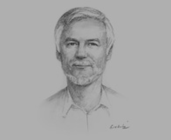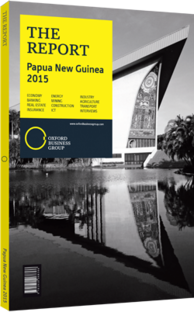Greg Anderson, Executive Director, PNG Chamber of Mines and Petroleum: Interview

Interview: Greg Anderson
As the global mining industry continues to be subdued, to what extent is this situation affecting Papua New Guinea’s economic growth?
GREG ANDERSON: PNG’s top mineral export commodity, gold, has been adversely affected by falling gold prices, which have now dropped below $1200 an ounce. There is no expectation that these prices will recover anytime soon. Most gold mines have struggled to stay profitable over the past three years, with gold generally a little above $1200. In this scenario, mineral exploration activity has fallen away from record levels and is now at its lowest point in nearly a decade. Junior explorers have lost most of their value on share markets and are struggling to raise funds for exploration. The majors have pulled out of farm-in deals and currently are focusing largely on near-mine exploration.
These developments are having a significant impact on the PNG economy, with gold export revenues falling from PGK6.4bn ($2.4bn) at its peak in 2010 to around PGK5.4bn ($2bn) in 2014. According to the 2015 PNG budget, employment in the mining sector in the year to June 2014 had declined by 22.7%. Besides the sharp cutbacks in exploration, PNG’s mines have been rationalising operations in order to reduce costs and stay competitive. Tax revenues have also been falling sharply from the resources sector, which traditionally provides the bulk of government revenues. However, this has been partly offset by the start-up in May 2014 of the PNG liquefied natural gas (LNG) project and by the economic diversification that has taken place over the past decade.
After enjoying economic growth rates of 13.3% in 2014 and an estimated 11% in 2015, GDP is expected to increase by less than 5% in the next three to four years, according to forecasts by the Department of Treasury. A further impetus for GDP growth will come from the next phase of new mining projects and the proposed second LNG plant, which will be based on gas reserves and located in Gulf Province.
With a new Mining Act currently under review, how can the government shape this legislation to support industry growth over the long term?
ANDERSON: For 10 years until 2012, PNG’s resource sector experienced continuous growth. Initially this came from rising commodity prices and, subsequently, from new ventures starting up, particularly the $19 billion PNG LNG project led by ExxonMobil. I believe many people have not come to terms with the new reality of sharply lower prices for most mineral commodities, crude oil and LNG. The current Mining Act has helped to underwrite the surge in exploration activity and the launch of several new projects, including the Hidden Valley silver-gold mine, the Simberi and Sinivit (now closed) gold mines and the $2.2bn Ramu Nickel project, the first in the country to produce nickel and cobalt.
Any changes to the Mining Act will need to account for the current price scenario for commodities, the global plunge in exploration and development activities, and the competitive environment for new investments. Failing this, changes to the act could jeopardise the future of the industry and inhibit investors from returning once commodity prices come out of the current cyclical downturn.
Despite the relatively high operating costs in PNG, international mining companies have generally come to accept development conditions in PNG, particularly in light of the country’s promising geological prospects. Local rules have included the right of the national government to take up to a 22.5% stake in any oil and gas project, and 30% in any mining venture, after paying its share of sunk costs and development costs. At this fundamental crossroads, the government should take care to ensure that investors remain confident that legislation and policy will stay stable and competitive, so that these investors continue as active players in the country’s resource sectors. Major changes to the rules of the game could jeopardise future exploration and new projects.
You have reached the limit of premium articles you can view for free.
Choose from the options below to purchase print or digital editions of our Reports. You can also purchase a website subscription giving you unlimited access to all of our Reports online for 12 months.
If you have already purchased this Report or have a website subscription, please login to continue.

